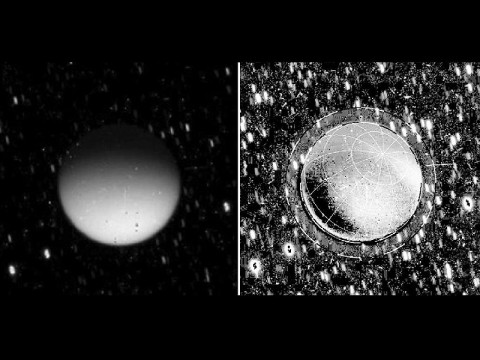Written by Jia-Rui C. Cook
NASA’s Jet Propulsion Laboratory
 Pasadena, CA – A literal shot in the dark by imaging cameras on NASA’s Cassini spacecraft has yielded an image of a visible glow from Titan, emanating not just from the top of Titan’s atmosphere, but also – surprisingly – from deep in the atmosphere through the moon’s haze.
Pasadena, CA – A literal shot in the dark by imaging cameras on NASA’s Cassini spacecraft has yielded an image of a visible glow from Titan, emanating not just from the top of Titan’s atmosphere, but also – surprisingly – from deep in the atmosphere through the moon’s haze.
A person in a balloon in Titan’s haze layer wouldn’t see the glow because it’s too faint – something like a millionth of a watt. Scientists were able to detect it with Cassini because the spacecraft’s cameras are able to take long-exposure images.

Scientists are interested in studying the input of energy from the sun and charged particles into Titan’s atmosphere because it is at the heart of the natural organic chemistry factory that exists in Titan’s atmosphere.
“Scientists want to know what galvanizes the chemical reactions forming the heavy molecules that develop into Titan’s thick haze of organic chemicals,” said Linda Spilker, Cassini project scientist, also at JPL. “This kind of work helps us understand what kind of organic chemistry could have existed on an early Earth.”
The light, known as airglow, is produced when atoms and molecules are excited by ultraviolet sunlight or electrically charged particles. Cassini scientists have already seen an airglow from Titan’s nitrogen molecules caused by X-rays and ultraviolet radiation from the sun when Titan was illuminated by the sun. During 2009, Titan passed through Saturn’s shadow, offering a unique opportunity for Cassini instruments to observe any luminescence from Titan while in darkness. Cassini’s imaging cameras could see in very dim light by using exposure times of 560 seconds.
Scientists expected to see a glow in the high atmosphere (above 400 miles, or 700 kilometers in altitude) where charged particles from the magnetic bubble around Saturn strip electrons off of atmospheric molecules at Titan. Although an extremely weak emission was seen in that region, they were surprised to see Titan’s dark face glow in visible wavelengths of light from deeper in the atmosphere (at about 190 miles or 300 kilometers above the surface), as though illuminated by moonshine from nearby satellites.
Scientists’ best guess is that the glow is being caused by deeper-penetrating cosmic rays or by light emitted due to some kind of chemical reaction deep in the atmosphere.
“This is exciting because we’ve never seen this at Titan before,” West said. “It tells us that we don’t know all there is to know about Titan and makes it even more mysterious.”
Scientists have previously reported that the nightside Venus atmosphere also produces a glow, called the Ashen light. Some have suggested that lightning on Venus is responsible, although that explanation is not universally accepted. While Cassini’s radio wave instrument has detected lightning at Saturn, it has not detected lightning at Titan. Scientists plan to keep looking for clues as Cassini continues to make its way around the Saturn system for another season.
The Cassini-Huygens mission is a cooperative project of NASA, the European Space Agency and the Italian Space Agency. JPL, a division of the California Institute of Technology in Pasadena, manages the Cassini-Huygens mission for NASA’s Science Mission Directorate, Washington. The Cassini orbiter and its two onboard cameras were designed, developed and assembled at JPL. The imaging team is based at the Space Science Institute in Boulder, CO.


